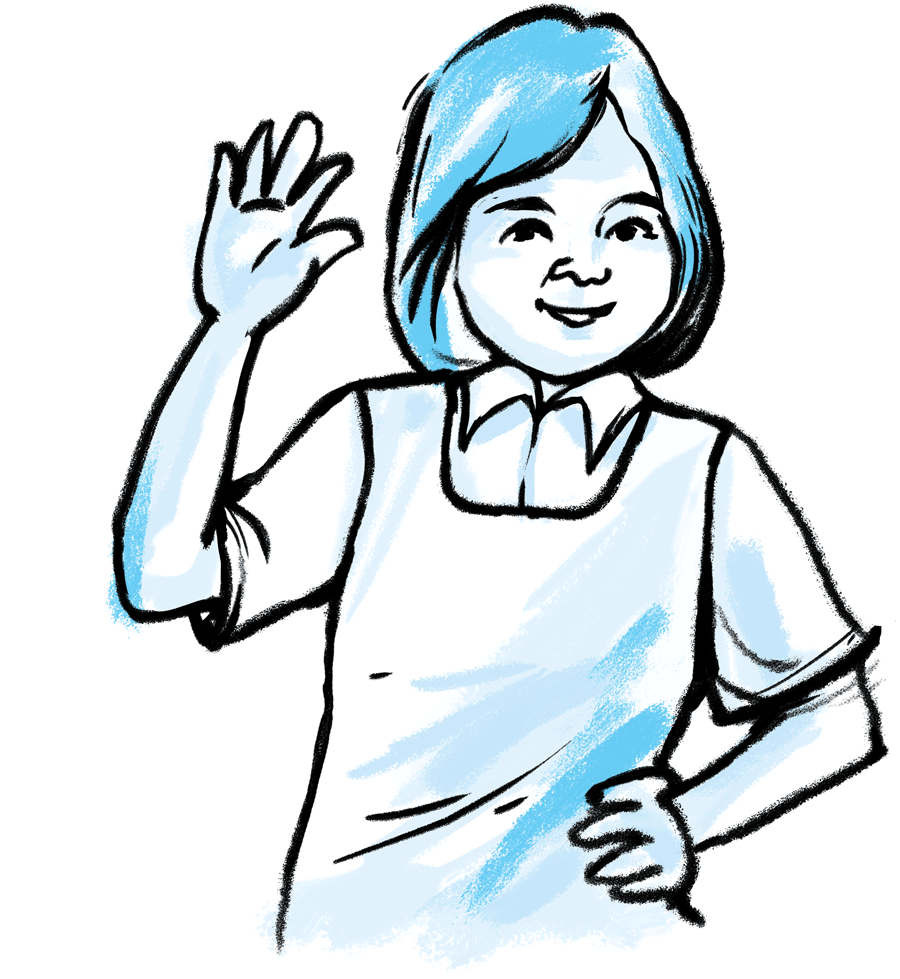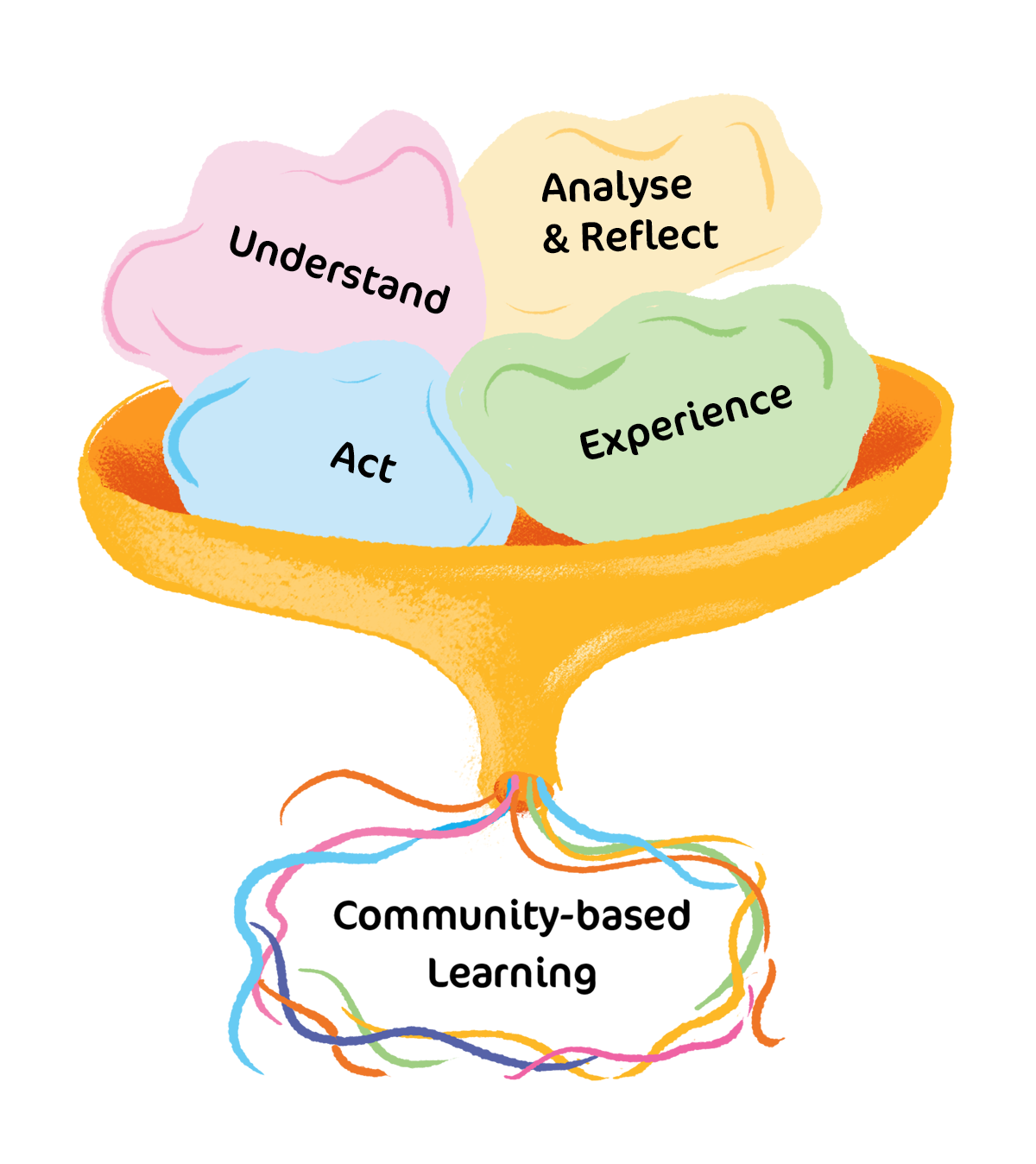CBL Methodology
Activating Head,
Heart, and Hand
To nurture well-rounded students, it is not enough to focus on knowledge. CBL aims to activate all three domains of learning: cognitive (head), socio-emotional (heart), and behavioural (hand). As students develop their knowledge and learn to apply critical thinking, they must also realise that they belong to a common humanity and grow in their empathy and compassion for others. With the knowledge, skills, and motivation to create positive change, CBL prepares students to take action to address issues around them.

How to frame a CBL project
The power of CBL is in its relevance to students’ lives – a good CBL project helps students connect what they learn in the classroom with a local issue or asset. Identify a suitable topic for students to investigate onsite that complements specific knowledge, skills, and values related to the curriculum or co-curriculum.

Components of learning in CBL
After framing the CBL project, you can design the learning journey for your students. CBL consists of 4 components of learning that are crucial to enable students to connect classroom knowledge with onsite experiences and demonstrate their understanding through application and action. You may arrange the components in any order that is most suitable for your context.
Understand
Students learn about concepts and context for the topic, site, and community.
Analyse and Reflect
Students analyse findings, assess the situation, and ideate solutions.
Experience
Students learn through investigation and interaction with the site and community.
Act
Students share findings or initiate small actions towards change.

Here are some examples of how to plan the components of learning in a CBL project:
Example 1
1. Experience
Interview community members
2. Analyse and Reflect
Process the interview data and reflect on the experience of interviewing
3. Understand
Explore statistics from other countries to discover the larger context of the issue or topic
4. Act
Develop potential solutions for the issue
Example 2
1. Understand
Watch a video that introduces the big picture of the issue
2. Experience
Onsite immersion and investigation
3. Analyse and Reflect
Compare the data gathered online and onsite, and reflect on personal experience related to the issue
4. Act
Discuss how to address the issue and apply those ideas
Remember, you can always repeat or revisit certain components based on your needs. For instance, after an initial round of community interviews (“Experience”) and data analysis (“Analyse and Reflect”), you may decide that adding an activity for hands-on participation (“Experience”) will help your students appreciate the complexity of the issue.
Get inspired by sample CBL projects conducted by other educators.
